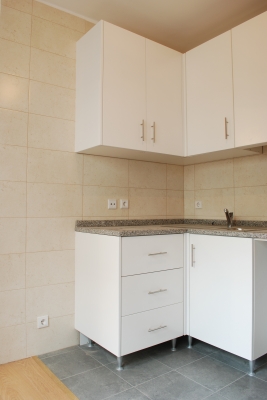Why to Choose a Stone Floor
 When faced with the decision of what type of floors to put in their kitchens, most homeowners opt for the usual suspects - laminate, tile or hardwood. Yet there is another striking option that adds warmth and beautiful color which doesn’t get as much attention: natural stone.
When faced with the decision of what type of floors to put in their kitchens, most homeowners opt for the usual suspects - laminate, tile or hardwood. Yet there is another striking option that adds warmth and beautiful color which doesn’t get as much attention: natural stone.
Benefits of natural stone in the kitchen
Attractiveness
Stone tile adds a certain class to your kitchen that no other flooring material can. This is because it comes directly from nature and contains so much variety.
Comes from the Earth
For those who prefer to be “green,” the idea of natural stone flooring may be especially attractive. The look and feel helps homeowners get closer to nature and can even help them feel more in harmony with it by bringing an outdoor element in.
Stain resistant
Natural stone tile is stain resistant so it looks new or well-kept for longer. It is difficult to break once installed, so likely won’t need to be replaced or repaired.
Burn resistant
Natural stone tiles do not burn easily. This is because they have already been heated to exponentially high temperatures by the earth during their inception.
Slip resistant
Some natural stone tiles are innately slip resistant and others are specially treated (not-glazed or carefully glazed) to make sure they become slip resistant before they reach the consumer.
Types of natural stone tile
The most common natural stones used in the home are slate, travertine, marble, granite, limestone and sandstone. These are all suitable for kitchen use. Each can bring a certain “geological splendor” to the kitchen area.
Travertine
This natural stone resembles marble, but it is actually a form of limestone. However, it has gone through part of the metamorphosis or transformation process.
Granite
Granite is the most solid and most indestructible form of stone. It withstands heat and resists staining and scratching especially well.
Slate
Slate is a remarkably versatile manner of stone. Depending on one’s taste and style, it can be made to appear either elegant or rustic. Slate also resists both stains and water, and is usually found in dark gray, soft red, and medium green.
Marble
Marble is an exquisite stone that has been used in structures since antiquity. It was used in the building and sculptures of the historical Parthenon in Athens, Greece
Sandstone
Just as its name implies, this stone is made of sand and a type of cementing material. The earth’s crust is made up mostly of sandstone. Not surprisingly, it is plentiful and comes in mostly earth colors which include tan, brown, yellow and gray. It sometimes even has a stratified appearance.
Limestone
Limestone is softer than marble so it feels easy on the feet. Many times it is formed from marine life such as coral and shells. When limestone is cut from the same slab, the tiles do not vary much one from another.
For more information about natural stone and to view a plentiful variety of possibilities, please visit Sunwood.





